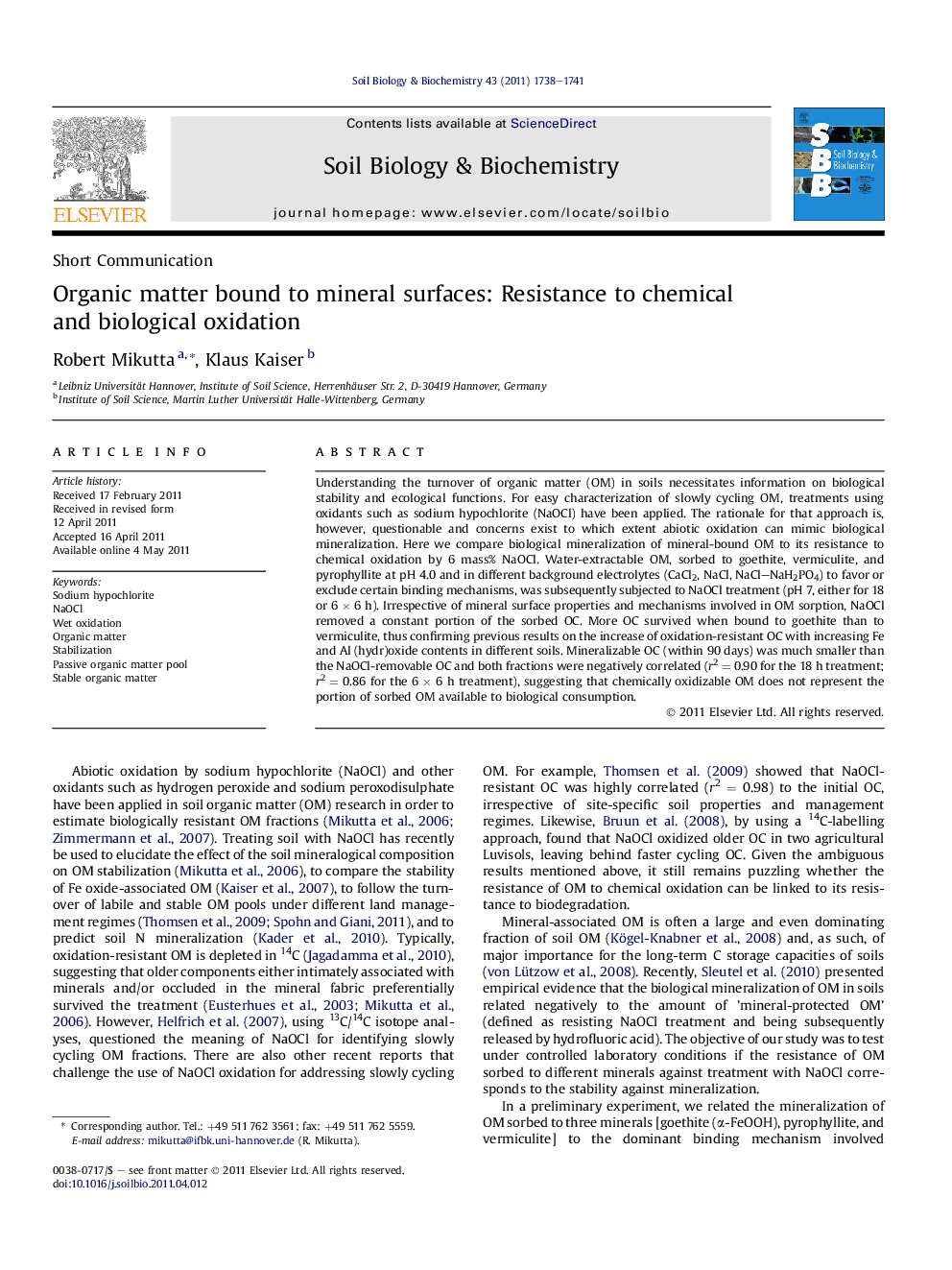| Article ID | Journal | Published Year | Pages | File Type |
|---|---|---|---|---|
| 2025113 | Soil Biology and Biochemistry | 2011 | 4 Pages |
Understanding the turnover of organic matter (OM) in soils necessitates information on biological stability and ecological functions. For easy characterization of slowly cycling OM, treatments using oxidants such as sodium hypochlorite (NaOCl) have been applied. The rationale for that approach is, however, questionable and concerns exist to which extent abiotic oxidation can mimic biological mineralization. Here we compare biological mineralization of mineral-bound OM to its resistance to chemical oxidation by 6 mass% NaOCl. Water-extractable OM, sorbed to goethite, vermiculite, and pyrophyllite at pH 4.0 and in different background electrolytes (CaCl2, NaCl, NaCl–NaH2PO4) to favor or exclude certain binding mechanisms, was subsequently subjected to NaOCl treatment (pH 7, either for 18 or 6 × 6 h). Irrespective of mineral surface properties and mechanisms involved in OM sorption, NaOCl removed a constant portion of the sorbed OC. More OC survived when bound to goethite than to vermiculite, thus confirming previous results on the increase of oxidation-resistant OC with increasing Fe and Al (hydr)oxide contents in different soils. Mineralizable OC (within 90 days) was much smaller than the NaOCl-removable OC and both fractions were negatively correlated (r2 = 0.90 for the 18 h treatment; r2 = 0.86 for the 6 × 6 h treatment), suggesting that chemically oxidizable OM does not represent the portion of sorbed OM available to biological consumption.
► Organic matter resistant to wet oxidation has been considered a biologically stable fraction. ► The OC fraction in mineral−organic associations oxidizable by sodium hypochlorite was inversely related to the mineralizable OC fraction. ► Organic matter resistant to chemical oxidation cannot be used as proxy for biologically stable OM.
